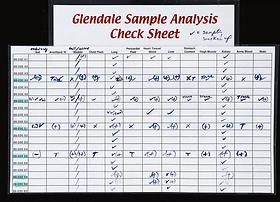Cases
A "lab of last resort" solving the Efren Saldivar case
"I got a hit…and it took the wind out of my lungs. It was a real homicide…The patients had died a terrible death."
—Brian Andresen, Ph.D., American forensic chemist, 2004
In 1998 a respiratory therapist at a Glendale, California hospital told police that he had ended the lives of 50 patients. Efren Saldivar stated that he had deliberately overdosed patients with pancuronium bromide (Pavulon) or succinylcholine chloride. But, when he recanted his confession, police were forced to release him for lack of evidence.
Experts then referred detectives to the Lawrence Livermore National Laboratory's Forensic Science Center, sometimes called the "lab of last resort." There, Dr. Brian Andresen said Pavulon might still be detectable in the victims' bodies. If so, police could prove that murder had been committed.
